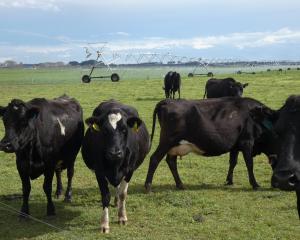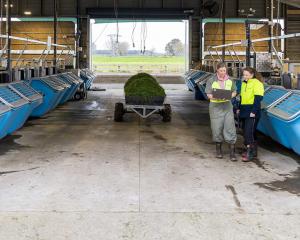
The bacterial cattle disease, first confirmed in New Zealand on Glenavy dairy farms in late July, causes ill-health and is mainly spread through nose-to-nose contact. It does not affect humans or food products from the cattle.
The Ministry for Primary Industries, in its 62nd outbreak update on March 9, said an Upper Waitaki dairy grazing farm and a small Southland calf-rearing farm took the number of infected properties to 27. Both were traced through contact with previously known infections.
In a further update last Wednesday, the ministry reminded farmers to record any movements of stock between farms that have separate Nait (National Animal Identification and Tracing) numbers.
''This applies even if the stock is only moving to a run-off down the road.
''The national bulk milk survey is continuing and is on track to be completed by the end of the month,'' the ministry said.
More than 55% of dairy farms have sent in their second of three tests, and 16% have finished all three rounds of testing.
''Any positive or suspect samples will be followed up by MPI urgently. All farms where Mycoplasma bovis is not found will receive a report from the dairy company they supply, once all three rounds have been completed for that farm. This will normally be around 10 days after the last sample has been collected. The results will be reported as 'not detected'.
''Generally, prolonged or repeated contact with infected animals is required for Mycoplasma bovis to be transmitted. As yet there are no indications of Mycoplasma bovis spreading across fences or boundaries unless stock have moved between the groups on either side.
''This means that keeping mobs separate is an effective way to prevent spread within a property, especially for dry stock and grazing farms where mobs from several suppliers winter on the same farm.''
The ministry said all its testing and ongoing surveillance ''still indicates we are dealing with an isolated outbreak, and not an endemic infection''.
North Otago Federated Farmers dairy chairman Lyndon Strang said that apart from those directly affected by the disease, the region's dairy farmers were ''in a pretty good space''.
''Autumn has been good, the cows are milking well.
''Mating results on the whole were down a wee bit.''
Regular rainfall meant farmers were saving both money and time by not needing to use irrigation, Mr Strang said.
''There's a big demand for more knowledge and education about how to winter stock.''
A workshop discussing the relevant information would be held in Weston in the near future.
Both graziers and livestock owners wanted to know how to safeguard animals from various sources, he said.
He believed North Otago properties posed no greater risk than farms in Canterbury and Southland.
''North Otago is probably more contained. We're quite clear about who's got it (M. bovis).''
Just because the outbreak had been going on for many months, it did not mean it was over, Mr Strang said.
At a conference he attended recently, the head of Ospri (Operational Solutions for Primary Industries) said it was looking at a full review of Nait and making sure livestock owners were using it properly.














